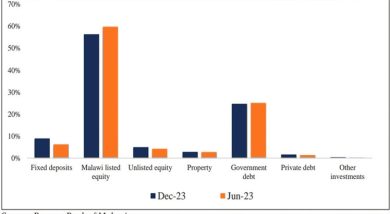Food outlook could improve—Fewsnet
 Malawi’s food security prospects could improve if maize prices register only moderate increases, says the Famine Early Warning Systems Network (Fewsnet) in its latest analysis of the country’s food outlook.
Malawi’s food security prospects could improve if maize prices register only moderate increases, says the Famine Early Warning Systems Network (Fewsnet) in its latest analysis of the country’s food outlook.
However, the organisation notes that given the high prices even before the recent devaluation of the kwacha and the poor maize harvest in the South, households are likely to face difficulties affording key non-food expenditures, and may still face food deficits, even if price increases are modest.
The report says provision of humanitarian food assistance to poor households would result in better food security outcomes than presented.
It adds that relaxation of border restrictions in Mozambique allowing poor households from the Lake Chilwa-Phalombe Plain and Lower Shire Livelihood zones to access more wage labour could reduce food shortages in the two livelihood zones.
The Fewsnet analysis shows that roughly one million people in the country could require emergency assistance to meet basic food needs.
Government in May announced a 49 percent devaluation of the local currency, a situation that has triggered price increases of basic commodities.
“The Southern Region is a deficit area that receives most of its food from Central and Northern Malawi, and, therefore, transportation costs (which have increased as a result of the devaluation and a recent fuel price increase of about 30 percent) play an important role in determining cereal prices,” reads the analysis.
Second round crop estimates by the Ministry of Agriculture and Food Security suggest a total maize harvest of 3.61 million metric tonnes, which is seven percent lower than last year and slightly above the five-year average of 3.46 million metric tonnes.
Based on the National Statistics Office (NSO) projections, the population of 14.8 million people has a national cereal requirement of 2.8 million tonnes. Currently, post-harvest losses are projected at 13 percent and a cereal surplus of 566 552 tonnes is estimated.
From March to April 2012, national average maize prices decreased almost 11 percent, in keeping with seasonal trends. This price decrease was influenced by the nearly 13 percent seasonal decline in the Central Region.
Prices in the South fell by 6.5 percent between March and April as households began to consume their 2011/12 harvests.





